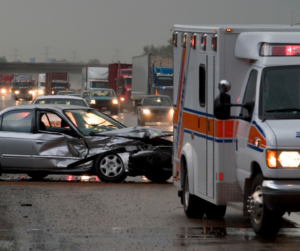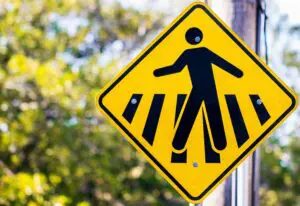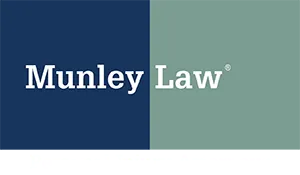What is a Loss?
A loss is the monetary value assigned to an injury or damage in a personal injury claim, including pain and suffering, past and future income, future medical care, at-home assistance, current medical bills, etc.
According to Black’s Law Dictionary, “loss” is defined as “the harm or damage resulting from an injury; the deprivation or detriment to an owner or possessor as a result of a judgment or voluntary transfer of property.” As such, loss is often a broad term in law, encompassing both tangible and intangible impacts as loss can come from a variety of forms of damages.
Legal principles governing loss aim to provide remedies, compensation, or restitution to individuals or entities adversely affected by wrongful acts, accidents, or adverse events. Loss can include economic loss, personal loss or property loss. The assessment of loss often involves evaluating evidence, calculating damages, and applying legal standards to determine liability and appropriate remedies in civil litigation or legal disputes. As a legal term, loss underscores the importance of addressing and mitigating the impacts of losses through legal recourse and equitable remedies in accordance with applicable laws and judicial principles.
More information about Loss
Nursing Home Abuse Lawyer
If you or your loved one has experienced nursing home abuse, Munley Law’s nursing home abuse lawyers are here to help. For many elderly individuals, moving to a nursing home facility brings anxiety and sadness. While we hope they’ll discover opportunities for socialization and round-the-clock care, neglect unfortunately occurs far too frequently. With 65 years of experience representing personal injury victims, our team provides powerful advocacy for residents who feel voiceless.
Call today for a no-obligation, free consultation.
The Types of Nursing Home Abuse
Nursing home abuse occurs when nursing home staff or other employees of a long-term care facility mistreat residents, causing them harm.
According to the World Health Organization (WHO) one in six people 60 years and older have been abused in a community care setting over the last year, with two out of three living facility staff admitting to elder abuse. […]
Read MoreMore information about Loss
What’s the Difference Between Premises Liability and Personal Liability?
If you’ve experienced a loss or injury, it’s important to determine whether the blame falls on an individual’s behavior or a hazardous condition on a property. This is why it’s important to understand the distinction between premises liability and personal liability. Both terms relate to the legal responsibility that may come into play in liability cases when victims seek justice and compensation from an individual or a property owner through a legal claim.
Understanding Premises Liability
For those injured on someone else’s property, understanding premises liability is necessary to explore options for justice. This area of law holds a property owner responsible for maintaining a safe environment for residents, employees, and visitors alike. When a property owner neglects this duty, they may be held liable for any injuries sustained.
Common types of premises liability claims include slip and fall accidents, dog bites, […]
Read MoreMore information about Loss
Internal Bleeding from a Car Accident
Car accidents often involve blunt force, which can cause an array of injuries like broken bones, organ damage, and more. Auto accidents may also cause internal injuries and internal bleeding. When you are involved in an auto crash, you must seek immediate medical attention to ensure that you do not have any injuries and receive proper care if you do. It is also of the utmost importance that you wear a seat belt every time you are in a motor vehicle to help prevent serious injuries in the case of a traffic crash.
The Causes of Internal Bleeding After a Car Accident
There are a variety of causes of internal bleeding after a car accident. Internal bleeding can be caused by damage to blood vessels, a traumatic brain injury, broken bones puncturing internal organs, and more.
The Visible Signs of Internal Bleeding
 There are many signs and symptoms of internal bleeding to look out for. […]
There are many signs and symptoms of internal bleeding to look out for. […]
More information about Loss
Average Settlement for a Pedestrian Hit By a Car
Pedestrians are often far more vulnerable than motorists when navigating busy cities and towns. In a car, a motorist or passenger is surrounded by a steel frame that absorbs the shock of impact during a collision. A pedestrian is not afforded nearly the same degree of protection.
You may deserve compensation if you’ve been harmed in a pedestrian accident you believe resulted from the negligence of another party. Although settlement amounts can be substantial in these cases, as injuries in a pedestrian accident are often serious, the “average” settlement after a pedestrian accident varies widely. Factors like whether a victim has proper representation can play a significant role in the outcome of a case.
Still struggling with the physical and emotional aftermath of being struck by a vehicle, wondering if legal action is your next step? At Munley Law, our pedestrian accident attorneys have guided countless pedestrians through this exact situation, […]
Read MoreMore information about Loss
Common Pedestrian Accident Injuries
Pedestrian accidents can lead to devastating injuries due to the inherent vulnerability of individuals on foot. Unlike occupants of motor vehicles, pedestrians have little protection against the force of an impact, often resulting in severe trauma. Understanding the common injuries sustained in these accidents is necessary for victims seeking compensation and support. The consequences can be life-altering, affecting not only physical health but also emotional well-being and quality of life.
Critical Injuries in Pedestrian Accidents

Pedestrian accidents can result in catastrophic injuries, including Traumatic Brain Injuries (TBI), spinal cord damage, internal organ injuries, and severe fractures and crush injuries. TBIs can cause long-term cognitive impairment, memory loss, and emotional disturbances, requiring extensive rehabilitation. Spinal cord damage can lead to partial or complete paralysis, requiring lifelong care and adaptations.
Internal organ injuries, […]
Read More








